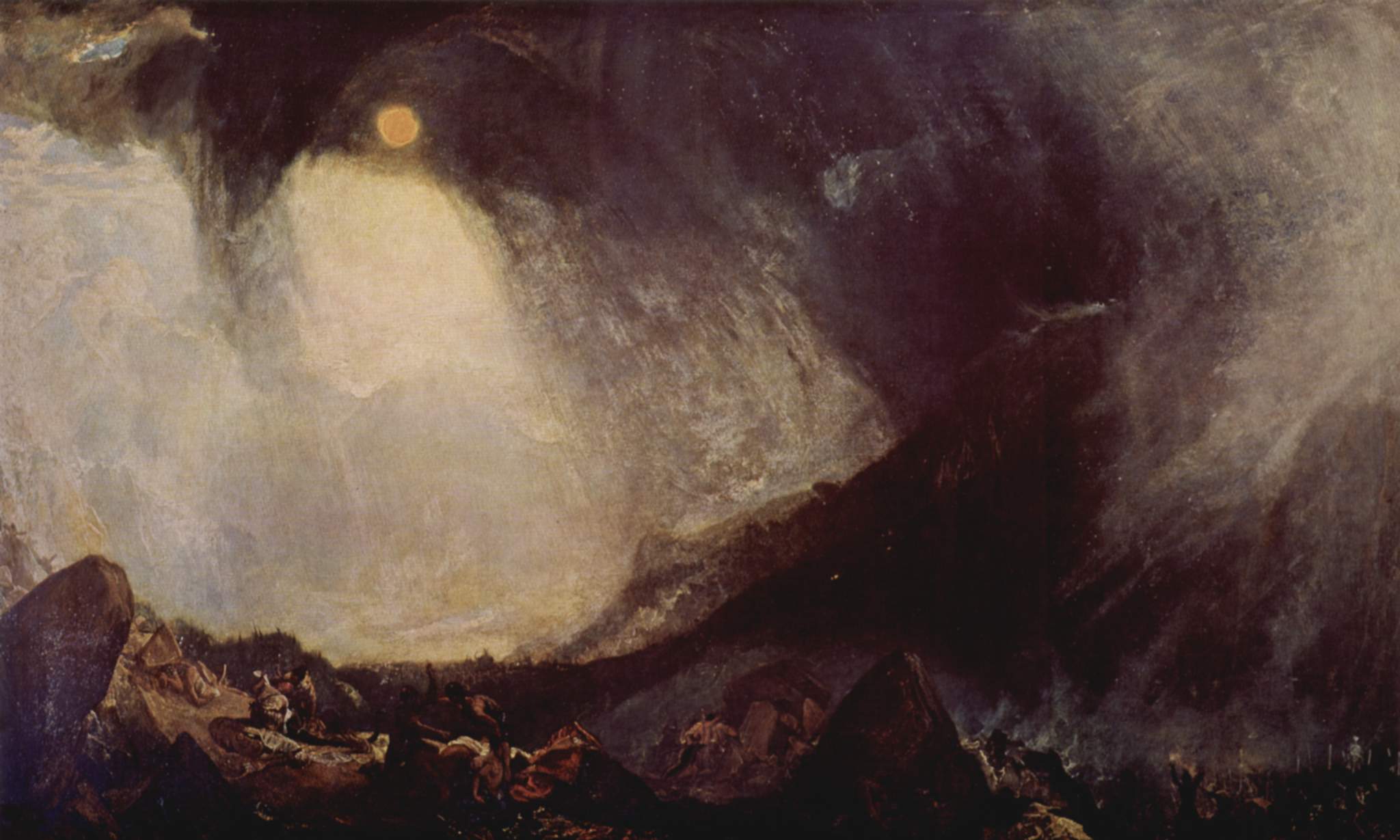The painting depicts the struggle of Hannibal's soldiers to cross the Maritime Alps in 218BC, opposed by the forces of nature and local tribes. A curving black storm cloud dominates the sky, poised to descend on the soldiers in the valley below, with an orange-yellow sun attempting to break through the clouds. A white avalanche cascades down the mountain to the right. Hannibal himself is not clearly depicted, but maybe riding the elephant is just visible in the distance. The large animal is dwarfed by the storm and the landscape, with the sunlit plains of Italy opening up beyond. In the foreground, Salassian tribesmen are fighting Hannibal's rearguard, confrontations that are described in the histories of Polybius and Livy. It contains the first appearance in Turner's work of a swirling oval vortex of wind, rain and cloud, a dynamic composition of contrasting light and dark that will recur in later works, such as his 1842 painting Snowstorm. Turner saw parallels between Hannibal and Napoleon, and the historic Punic War between Rome and Carthage and the contemporary Napoleonic Wars between Britain and France. The painting is Turner's response to Jacques-Louis David's portrait of Napoleon Crossing the Alps, of Napoleon leading his army over the Great St Bernard Pass in May 1800, which Turner had seen during a visit to Paris in 1802. Turner set his painting in the Val d'Aosta, one of the possible routes that Hannibal may have used to cross the Alps, which Turner had also visited in 1802.




Hannibal and his Men crossing the Alps
oil on canvas • 144.7 × 236 cm